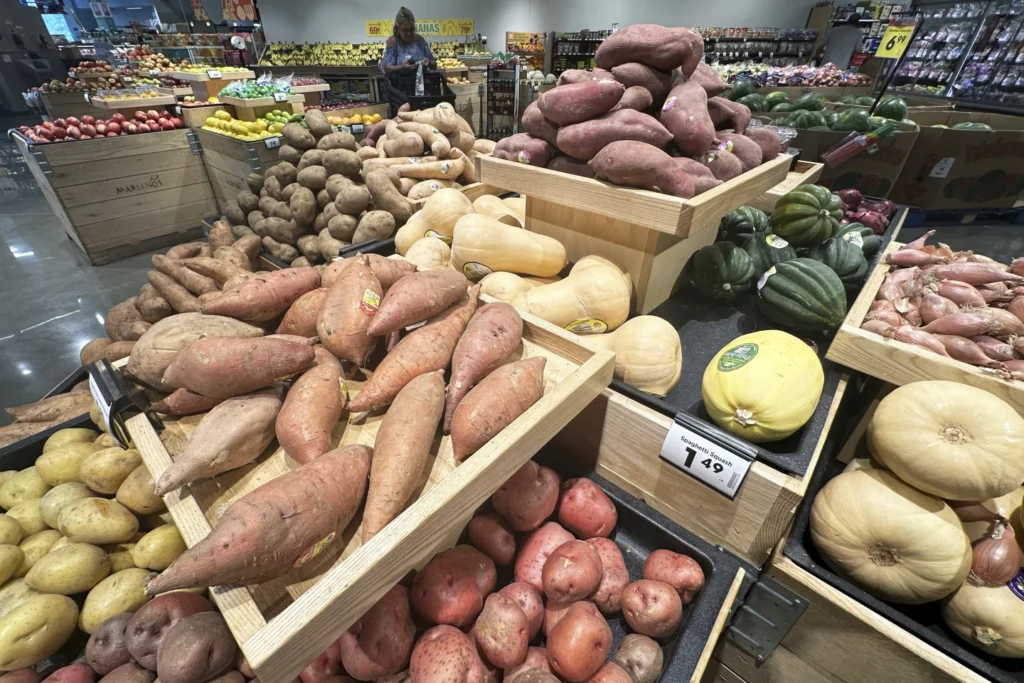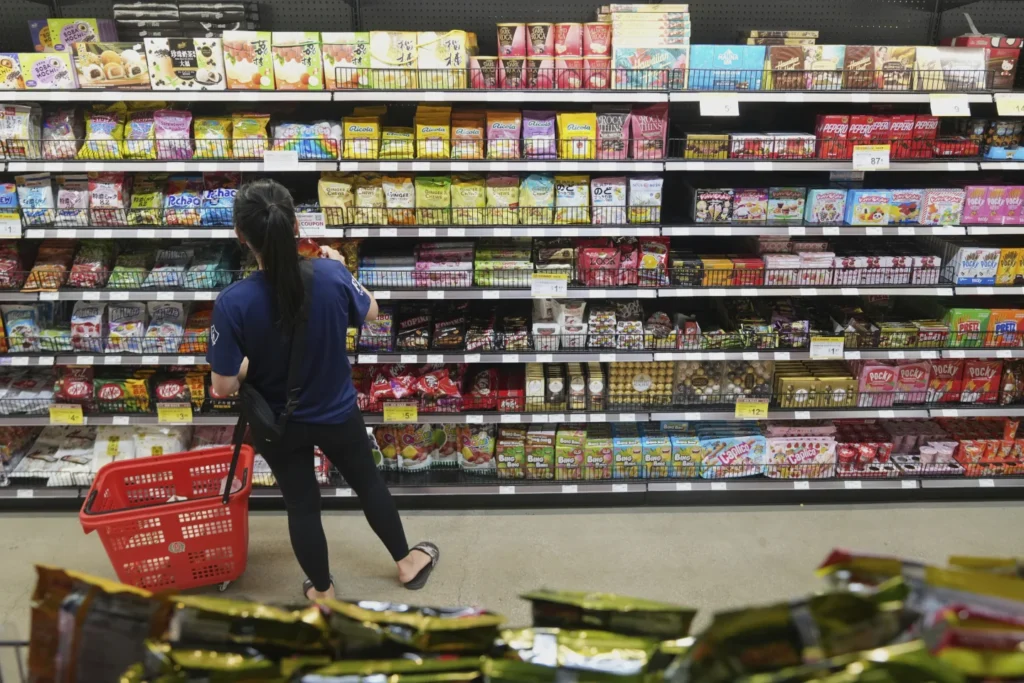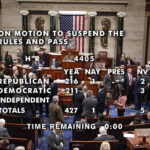Grocery Prices Stress Most Americans, AP-NORC Poll Reveals/ Newslooks/ WASHINGTON/ J. Mansour/ Morning Edition/ A new AP-NORC poll finds most U.S. adults are stressed about grocery prices. Half cite food costs as a major stressor, regardless of income or age. Women, Hispanic adults, and younger people report the highest financial anxiety levels.

Grocery Price Stress in America + Quick Looks
- Majority of Americans feel grocery prices are a major stressor, according to an AP-NORC poll.
- Half of respondents say grocery costs are a major source of stress; only 14% report no stress.
- Stress levels span income brackets, with even high earners feeling the pressure.
- Young Americans are especially impacted, with many turning to “buy now, pay later” services.
- Buy-now-pay-later usage extends beyond luxury purchases, now covering groceries and medical expenses.
- Women and Hispanic adults report higher stress over income, savings, and housing costs.
- Rising prices are linked in part to tariffs and ongoing inflation concerns under President Trump.
- Housing, healthcare, and credit card debt also weigh heavily on U.S. adults, especially those earning under $30,000.
- Many are changing habits: shopping at discount grocers, skipping travel, and stretching budgets with financing apps.
Deep Look
Grocery Prices Top Financial Concerns as Most U.S. Adults Feel the Strain, AP-NORC Poll Shows
NEW YORK — The overwhelming majority of U.S. adults are feeling at least some level of stress over the rising cost of groceries, according to a new AP-NORC Center for Public Affairs Research poll released Monday. The poll highlights just how deeply food inflation continues to affect Americans’ day-to-day lives — even as President Donald Trump touts a recovering economy and strong consumer spending.
Roughly half of Americans say grocery costs are a “major” source of stress, while an additional 33% call them a “minor” stressor. Just 14% say they aren’t stressed about food prices at all — a stark signal that concerns about everyday essentials remain prevalent across all demographics.
While financial stress around housing, income, and healthcare also remain high, grocery costs uniquely unite Americans across age groups and economic divides. Older Americans, often buffered by Medicare and home ownership, still cite food prices as a concern. Meanwhile, younger adults — often burdened with student loans and higher housing costs — are now turning to buy now, pay later (BNPL) plans to cover essentials.
Stretching to Pay for Basics
Take 19-year-old Adam Bush from Portland, New York. He works full-time as a welder, earning under $50,000 annually, but often relies on BNPL services like Afterpay or Klarna for food and entertainment.
“I just keep watching the prices go up,” he said. “So I’m looking for the cheapest possible stuff — hot pockets and TV dinners.”
His story isn’t unique. Nearly 4 in 10 adults under age 45 report using these payment tools to cover not just luxuries, but everyday needs like groceries and medical bills. While these services offer short-term relief, consumer watchdogs warn of rising default rates and a lack of regulatory oversight.
Groceries, Gas, and the Everyday Budget
For retirees like Esther Bland, 78, in Buckley, Washington, groceries are a “minor” stressor — only thanks to local food banks. With no savings and a fixed income from Social Security and disability, she uses every dollar strategically.
“I stay home a lot. I only put about 50 miles on my car a week,” she said.
She spends mostly on utility bills and caring for her dogs — with essentials like paper goods, gas, and household supplies increasingly harder to budget for.
“We haven’t seen $3 a gallon here in a long time,” Bland noted.
Widespread Worry Across Income Groups
The poll found that 64% of households making under $30,000 cite grocery prices as a major stressor. But the concern doesn’t vanish with higher pay — even among households earning over $100,000, only 1 in 5 say they feel no stress at all about the cost of food.
Meanwhile, housing remains the most intense stressor for half of U.S. adults, with women and Hispanic Americans reporting the highest levels of anxiety about rent, mortgage payments, and availability of affordable homes.
Disparities Across Gender and Ethnicity
Women are significantly more likely than men to report stress about income, savings, groceries, and health costs. Among ethnic groups, Hispanic adults are most stressed about housing, student debt, and credit card bills, with Black adults following closely. White adults report lower, but still substantial, levels of financial pressure.
Shandal LeSure, 43, a receptionist in Chattanooga, Tennessee, earns close to six figures but still feels the pinch. She’s started shopping at lower-cost grocery stores and using BNPL apps to cover clothing, bills, and even temporary housing.
“That’s been able to help me stretch my dollar,” she said.
Broader Economic Implications
The poll comes amid heightened concern about the impact of President Trump’s tariff expansions, which economists say may be contributing to persistent inflation in food and imported goods. While wages have risen in some sectors, many families say those gains haven’t kept pace with basic expenses.
Whether through discount shopping or payment plans, Americans across the board are adjusting their lifestyles to cope with ongoing cost pressures — underscoring a financial fragility that could shape voter sentiment heading into the 2026 midterms.







